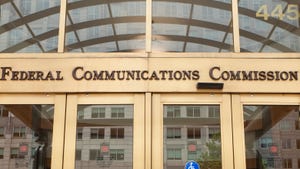Russia urges telcos to nurse networksRussia urges telcos to nurse networks
Bans on tech exports to Russia, following its invasion of Ukraine, have made it harder to maintain and upgrade the country’s comms infrastructure.
March 29, 2022

Bans on tech exports to Russia, following its invasion of Ukraine, have made it harder to maintain and upgrade the country’s comms infrastructure.
That’s why in a statement this week the Ministry of Digital Development urged mobile operators to maintain a “uniform load” on their networks to ensure consistent quality of service. Which sounds like an instruction for operators to not push the limits of their infrastructure in case something goes pop.
“In the context of external sanctions pressure and a reduction in the availability of foreign equipment, it is necessary to find a balance in maintaining and developing mobile networks. We take measures for reasonable traffic consumption while maintaining the quality and availability of basic digital services,” the ministry said on Monday.
In a separate statement, the digital ministry also hit pause on LTE coverage obligations, a tacit acknowledgement that telcos might struggle to get hold of the equipment they need in order to meet them. Under the terms of their LTE licence renewals last year, MTS, MegaFon, Tele2 and Beeline had been required to cover 80 percent of federal highways and settlements with populations greater than 1,000 by the end of 2024. That no longer appears to be the case though, with the government introducing a moratorium on pursuing these obligations for the rest of 2022, “as part of the anti-crisis programme to support telecom operators”.
In February, in response to Russia’s invasion of Ukraine, the US Department of Commerce in partnership with its allies introduced a sweeping package of export controls designed to restrict Moscow’s access to the technology it relies on for its defence, aerospace, and maritime industries. These include semiconductors, computers, and IT and telecommunication equipment. Of course, the private sector also needs things like computers and semiconductors, so they feel the pinch too.
US Internet giants also got in on the act earlier this month. Amazon suspended shipments to retail customers in Russia and Belarus, and said it would not accept any new AWS customers from these two countries. It also suspended its Prime Video service and sales of its video game, New World, in Russia. Google Play meanwhile suspended its service in Russia, meaning consumers can’t buy apps and games, make subscription payments or make in-app purchases.
All this has put pressure on the government to find domestic solutions to these problems.
Over the weekend, Russia’s digital ministry met with representatives of the IT sector to discuss its latest round of support measures, including grants, tax breaks and IT career incentives. The government has allocated 20 billion roubles this year to help companies switch from foreign solutions to homegrown equivalents. That’s about $225 million today, but at the beginning of February that was more like $260 million. Who knows what the rouble’s purchasing power will be in another month or two.
In terms of tax breaks, the government plans to suspend income tax between now and 2025, and implement a rate of three percent thereafter. Under previously-announced plans, tax on social insurance premiums will be capped at 7.6 percent. Eligible companies include domestic IT hardware and software makers, online advertising and education providers, and content subscription companies. Furthermore, the government is also considering waiving army call-ups for people working in IT, and offering preferential mortgages for IT specialists aged between 22 and 40.
Realistically though, these measures are unlikely to take the sting out of sanctions any time soon. A country could have hordes of the best-trained IT workers in the world, but what matters is the hardware and the components that enable them to carry out their work in the first place, and they take a long time, and cost a lot of money, to develop and manufacture at scale. In the case of semiconductors, for instance, Intel is spending $20 billion on a new factory in Ohio, and €33 billion to expand and upgrade its facilities in Europe. And as this Seattle Times report pointed out last year, it takes 700 steps and up to three months to manufacture a single computer chip.
There is an easier way out of this, which is for Russia to halt its destructive invasion of Ukraine. However, that would require rational minds to prevail and, much like semiconductors, they also appear to be in short supply.
Get the latest news straight to your inbox. Register for the Telecoms.com newsletter here.
About the Author
You May Also Like










.png?width=300&auto=webp&quality=80&disable=upscale)


_1.jpg?width=300&auto=webp&quality=80&disable=upscale)